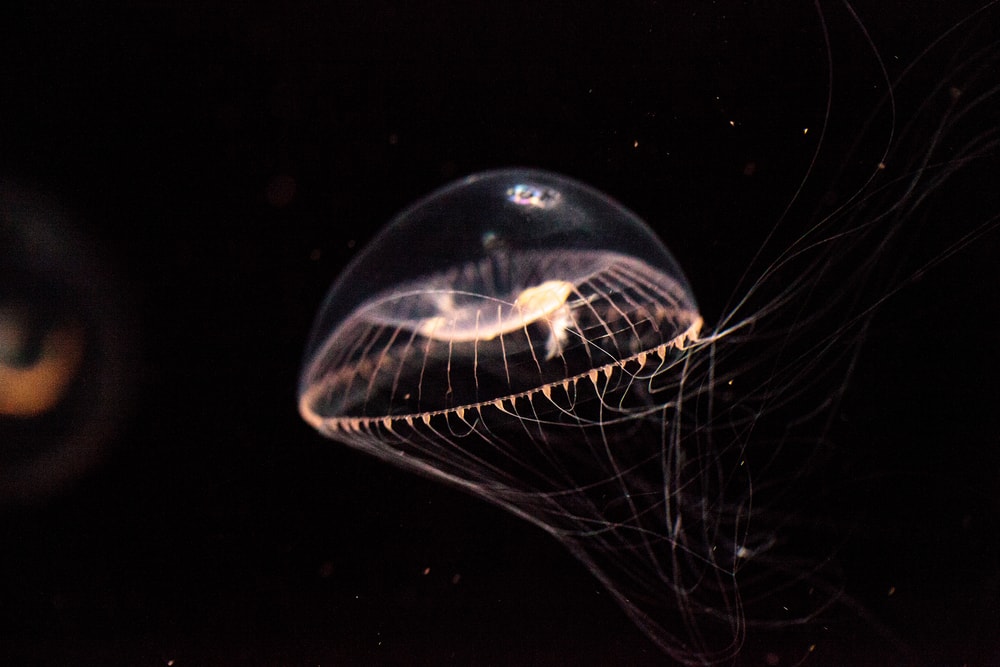Outforia Quicktake: Key Takeaways
- Crystal jellyfish are bioluminescent creatures, found in the Pacific Ocean off the west coast of North America, with lifespans of up to two years in captivity.
- They play a vital role in the ocean’s ecosystem, serving as primary prey for larger animals and offering insights into water quality through their population health.
- Crystal jellyfish have over 100 light-producing organs, and their luminescent substance, aequorin, has been used in biological and neurological research.
- Jellyfish have a complex life cycle, reproducing both sexually and asexually, and living as polyps for years before transforming into their recognizable medusa form.
- They have a lifespan of around 6 months in the wild and up to wo years in captivity and primarily feed on comb jellies, other hydromedusae, and copepods.
Jellyfish are some of the oldest animals in the world; they’ve been around for at least 500 million years.
There are about 2,000 known species of jellyfish worldwide. Yet, scientists believe there are likely over 300,000 species. We just haven’t discovered most of them yet. The crystal jellyfish (Aequorea victoria), is one of them.
Crystal jellyfish are some of the most fascinating and important species of jellyfish. They have bioluminescent properties, which means they glow.
Researchers have found a way to use these properties to make genes glow. Using these properties helps them observe things they otherwise couldn’t.
Keep reading to learn some amazing crystal jellyfish facts.
Crystal Jellyfish Characteristics
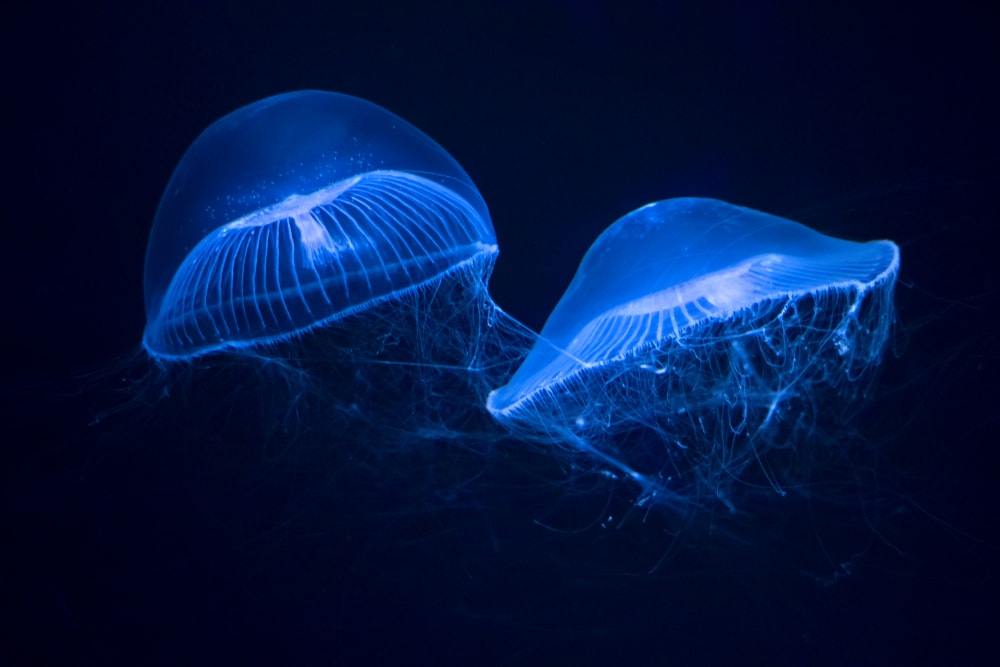
Crystal jellyfish are nearly transparent animals with thin, delicate tentacles.
Moderate-sized jellyfish bells reach up to 10 in (25.4 cm) in diameter. Still, their bells are not usually more than 3 in (7.6 cm) in diameter.
Jellyfish are very short-lived animals, and crystal jellyfish are no exception. Most species live somewhere between six months and two years of age.
Crystal jellyfish fall on the upper end of the spectrum. Many individuals have lived up to two years in captivity. In the wild, their lifespans likely fall lower on the spectrum, closer to six months.
Crystal Jellyfish Diet
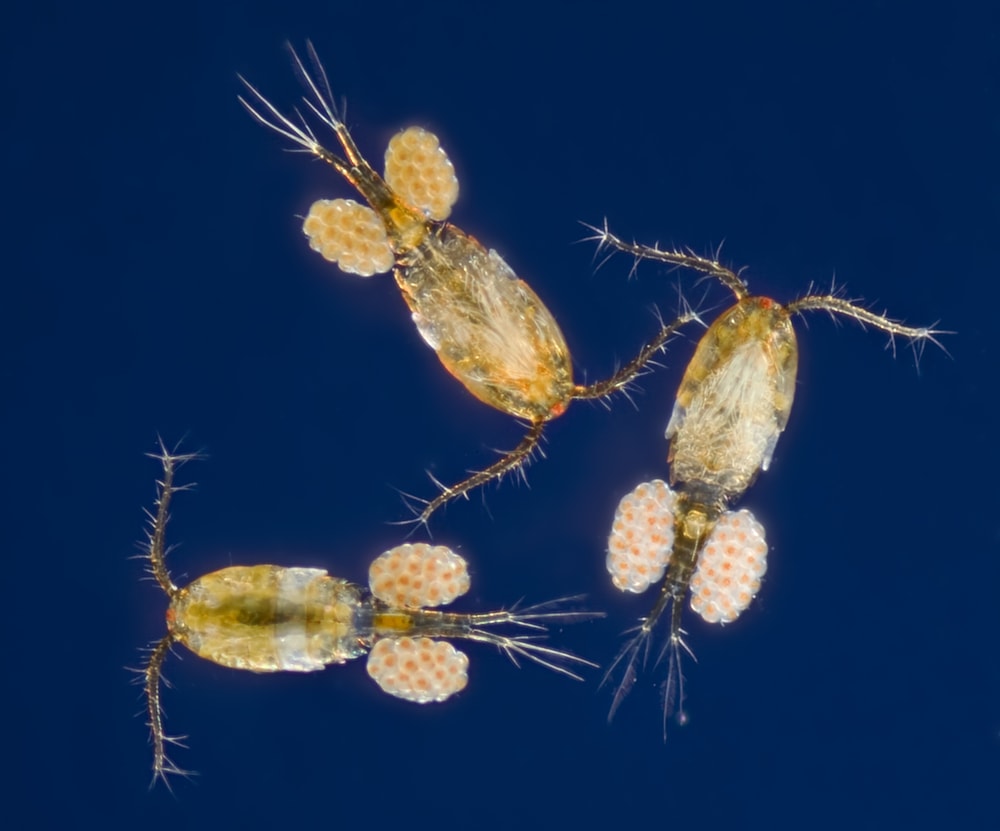
Crystal jellyfish tend to eat larger organisms. They eat comb jellies and other types of hydromedusae. They also eat smaller things, like copepods.
Crystal Jellyfish Habitat
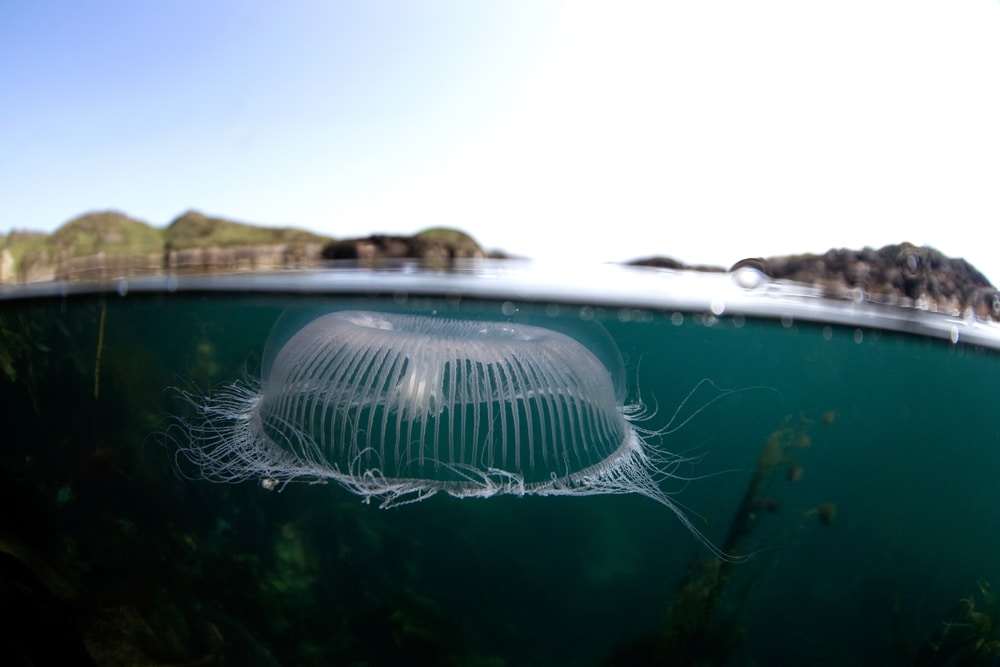
These jellyfish inhabit the Pacific Ocean off the west coast of North America. They live in these waters from southern California to Vancouver.
They are free-floating animals that live in the open ocean of the Pacific. They live close to the shoreline and far away from it.
You may also like: 15 Different Types Of Jellyfish You Need To Know: Chart And Pictures
Jellyfish Anatomy
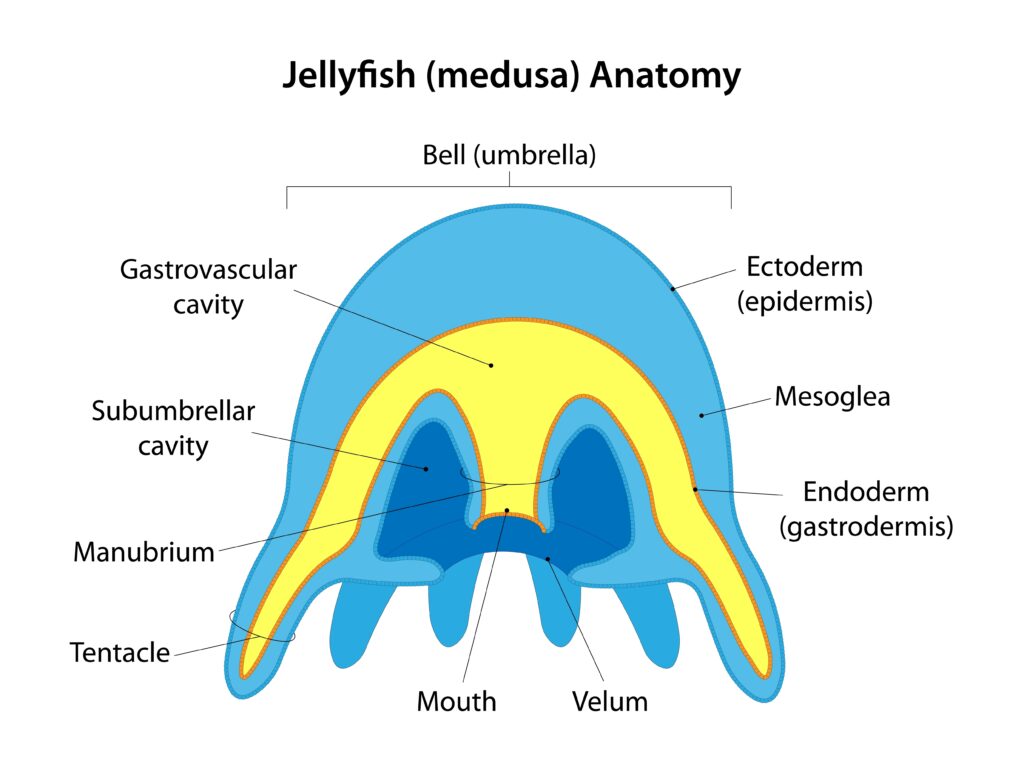
The vast majority of a jellyfish’s body comprises water; only about 5% of its body is solid material.
Jellyfish are simple creatures; they have no blood, hearts, or brains. Instead, they have an elementary nervous system called a “nerve net.” The nerve nets allow them to detect light and smell, and respond to other stimuli.

Jellyfish Only Have Three Layers
These animals comprise three layers: the epidermis, mesoglea, and gastrodermis.
The epidermis is the outer layer. It offers the jellyfish protection against its surroundings. The gastrodermis is the inner layer.
The mesoglea is the middle layer and makes up the majority of the body. The mesoglea comprises a thick, jelly-like substance. It allows them to stretch and move.

They Eat & Poop Out Of The Same Hole
Their digestive system is also simple: jellyfish only have a single opening. The opening sits at the center of the underside of their bell. It acts as both the mouth and the anus.
There is a shallow cavity inside the opening that acts as both the stomach and intestines.
A jellyfish eats, digests the food, and eliminates the waste all out of the same hole.

They Have Radial Symmetry
Jellyfish have “radial” symmetry. This means their bodies are round and symmetrical the whole way around their bodies. The benefit is that jellyfish can sense danger and other stimuli from any direction.

They Can Sting

Jellyfish are cnidarians. They are a group of animals that have stinging cells in their tentacles. The stinging cells are “cnidocytes.”
Cnidocytes are like small compartments inside the jellyfish’s tentacles. They hold stinging barbs called “nematocysts.”
When something brushes against a jellyfish’s tentacles, the cell opens up. Then, it releases the contained nematocysts. The stinger lodges into the skin of the animal that brushed the jellyfish.
Small animals, like the jellyfish’s prey, are instantly paralyzed by the venom carried in the barb.
Most jellyfish stings are painful, but few species produce a sting potent enough to kill a human.
You may also like: What Do Jellyfish Eat? Just About Anything They Can!
Crystal Jellyfish Adaptations
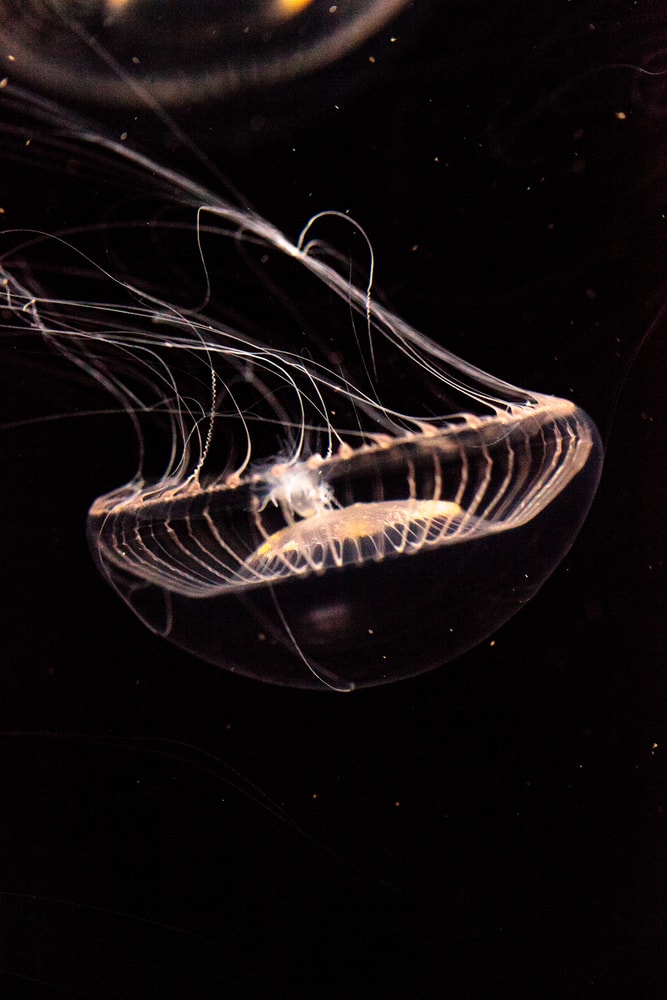
These jellyfish can expand their mouths when they’re eating. In doing so, they can eat prey more than half their size. Crystal jellyfish will even eat other jellyfish.
Bioluminescence
They have over 100 light-producing organs surrounding the outer bell. These organs are minuscule and activated when something disturbs the jellyfish. When activated, the organs produce a beautiful blue-green glow.
Luminescent aequorin is the substance that allows these jellyfish to glow. It has proven very helpful in biological and neurological experiments.
The aequorin is able to detect calcium. This allows researchers to do their studies more easily.
For example, researchers have utilized the “green fluorescent protein” (GFP). The GFP is an accessory protein that helps the jellies glow. GFP acts in combination with aequorin, which produces blue light.
Researchers insert the GFP gene into mice. After injection, researchers shine a blue light on the mice, and their bodies glow green. Doing so is an excellent way for researchers to study genes more effectively.
You may also like: How Long Do Jellyfish Live? Sweet & Simple Lives
Importance To The Ocean
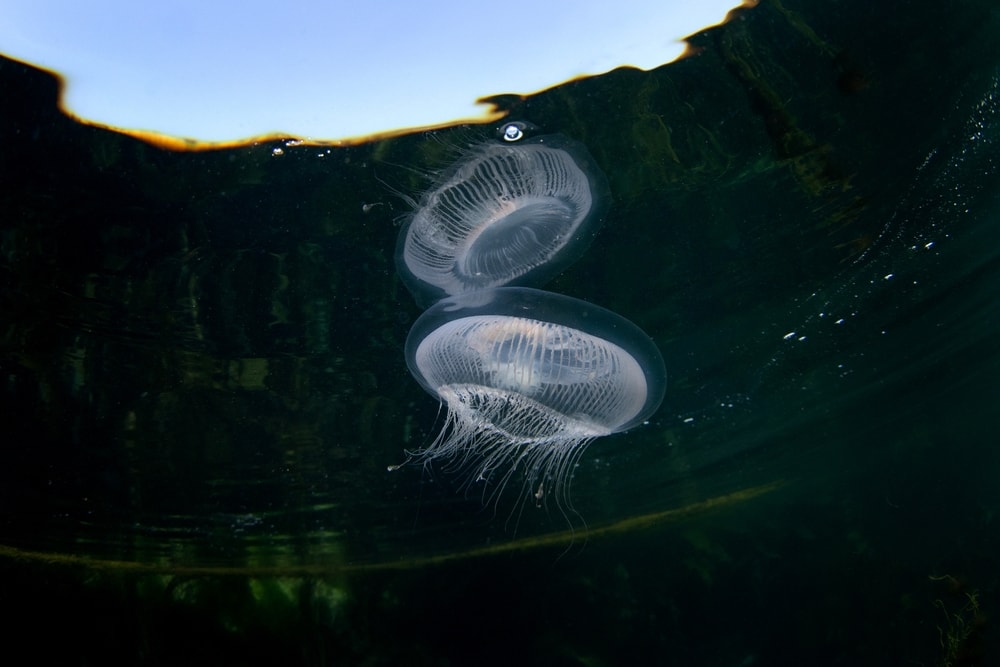
Crystal jellyfish are vital to the health of the ocean. They are the primary prey for many larger animals like ocean sunfish and sea turtles.
Unfortunately, the fact they are primary prey is not always a good thing. Their primary predators often mistake plastic bags for yummy jellyfish. Many predators have suffocated by eating plastic bags by mistake.
These jellyfish also offer insight into the ocean’s health. Researchers study the health of the jellyfish populations. This is because jellyfish are sensitive to changes in water quality.
When jellyfish populations take a downturn, it is a sign that something is going on with the health of the ocean.
Researchers have begun studying jellyfish “blooms.” They are looking at the correlation between blooms and the health of the nearby waters. It may be possible to predict changes in the ocean by studying jellyfish populations.
Jellyfish Lifecycle
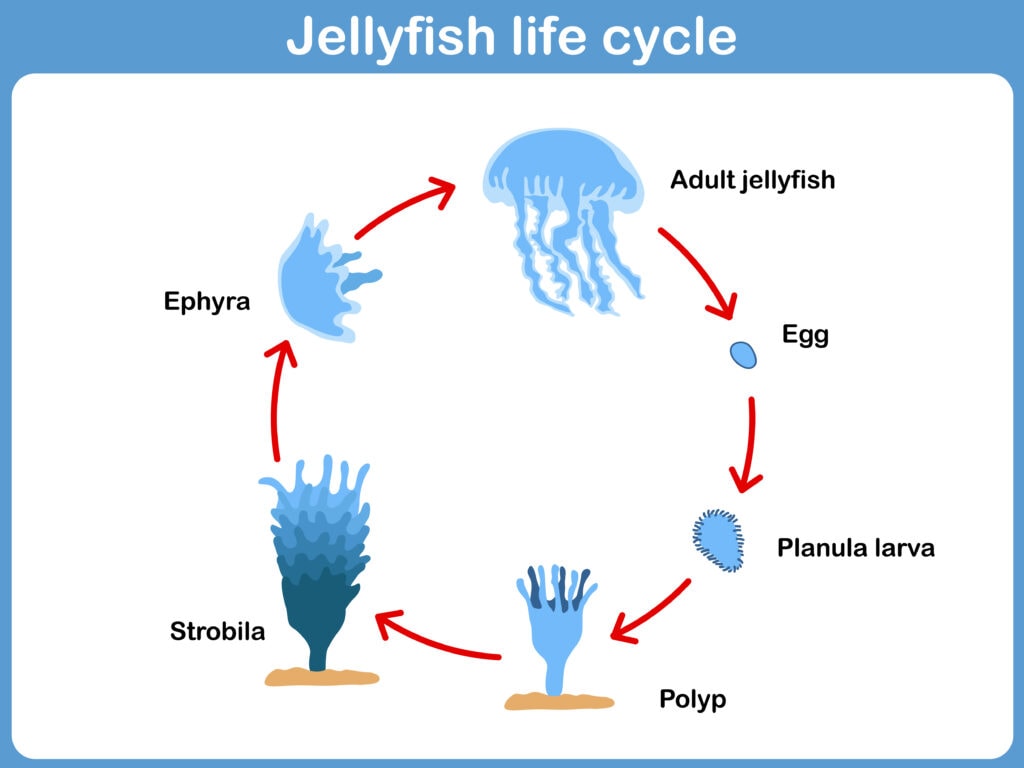
Despite being simple creatures, jellyfish have quite complex life cycles.
A single jellyfish reproduces sexually and asexually throughout its lifetime. They reproduce asexually as juvenile polyps. Sexual reproduction occurs as adult medusae.

Adult Medusae
Adult jellyfish are “medusae.” The medusa form is the one we generally recognize as jellyfish. They have large, umbrella-shaped bodies with long, flowing tentacles.
The medusa form is actually the shortest period of the jelly’s life. They can live for years as polyps, but medusa generally only live for a few months.

Eggs & Planulae Larvae
As adults reach the end of their lives, they go through spawning events where they produce eggs.
The eggs float through the water until they hatch into planulae larvae. The larvae look a bit like a flattened pear. The tiny creatures are free-swimming for the first few days of their lives.

The Polyp Stage & Asexual Reproduction
After a few days, the planulae larvae attach to a hard surface, like coral or rock. Then, they develop into polyps that resemble flowers.
Polyps have long tentacles that act as filters to draw in zooplankton. They have mouths that they use to feed on the zooplankton.
Polyps reproduce asexually, creating identical clones of themselves. They divide themselves in half. Doing so creates another polyp that is genetically identical to themselves.
Rather than creating new polyps, some polyps create genetically identical medusae.
Whether a polyp asexually produces polyps or medusae depends on the species.

Schyphozoans & Ephyrae
The reproduction process is slightly more complex for Schyphozoans.
These jellies go through a process called “strobilation.” The polyp splits itself into 10 to 15 segments that are flat like plates. The plate-like segments stack on top of each other. They create a tower-like structure called a “strobila.”
One by one, the segments begin separating from the strobila. The segments transform into ephyrae. Ephyrae are free-floating, immature jellyfish that look like their adult forms.

Medusae Form
Eventually, the polyps or ephyrae grow into medusae, depending on the species. In most jellyfish, this is their final form.
The Immortal Jellyfish
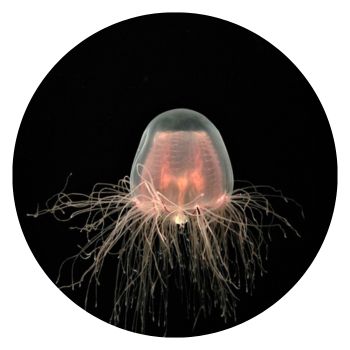
There is one species of jellyfish, Turritopsis nutricula, that hypothetically lives forever.
It grows just like any other jellyfish, but it has the ability to “reverse the clock” and go back to its polyp stage. It is the only known animal that can do this.
This species is otherwise known as the “immortal jellyfish.” It reverts to its polyp stage when resources are low or when it feels threatened. In theory, these animals can live forever if they continue going back to their juvenile stage. Still, they are as susceptible to predation as any other jellyfish species.
How Do Jellyfish Mate?
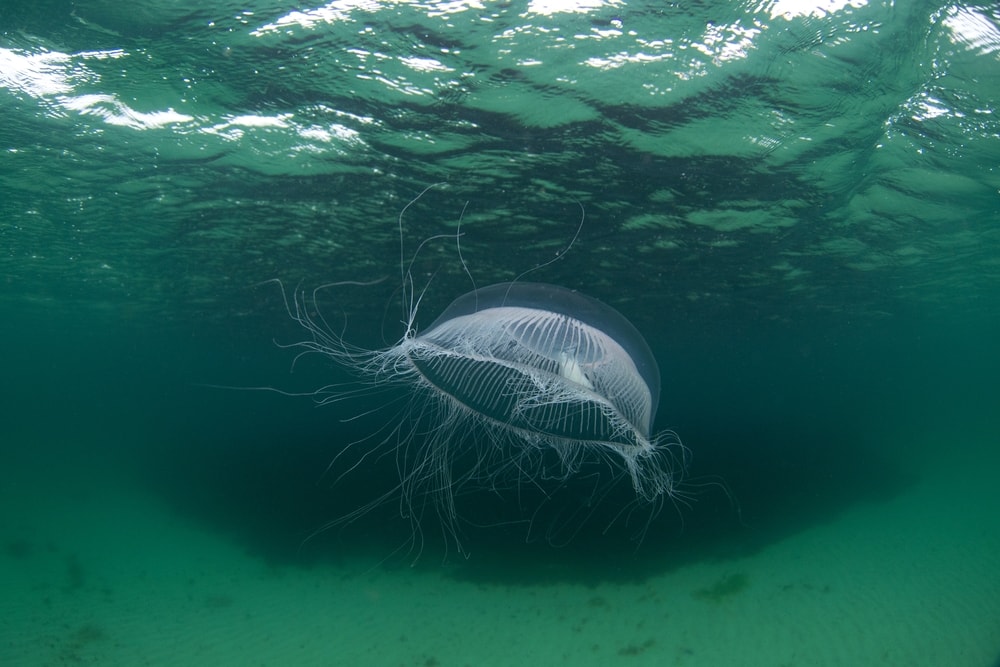
Medusae sexually reproduce through spawning. There are no hermaphrodites, so each jellyfish is either male or female. Each jellyfish produces either sperm or eggs, respectively.
Males and females gather together, releasing sperm and eggs en masse. Jellyfish release the eggs and sperm from their mouth — the single opening at the center of their bell.
The eggs and sperm enter the water column, and if the two meet, then the eggs are fertilized.
In some species, fertilization occurs a bit differently. The eggs and sperm do not meet each other in the water column. Instead, the sperm swims to the female jellyfish’s mouth and fertilizes the eggs she holds there.
Spawning events are often large. Entire jellyfish populations sometimes spawn at the same time.
You may also like: 14 Of Our Favorite Ocean Animals Listed: A World Of Wonders
Crystal Jellyfish FAQs
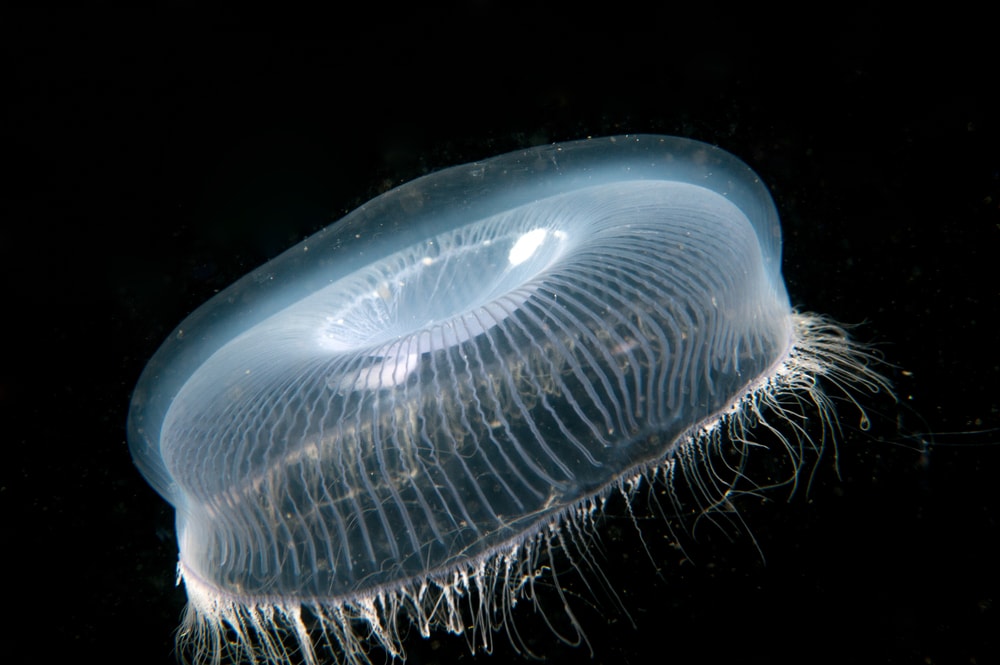
What Color Are Jellyfish?
The color of a jellyfish depends on its species. Many jellyfish are clear, but others have vibrant colors like red, blue, purple, yellow, or pink. Some jellyfish can even glow.
The color of a jellyfish often helps protect them from predators or helps them catch prey. The environment may also influence their color. Jellyfish can even change color depending on the food they’ve eaten.
Although they can change color, they can’t do so of their own free will. Color changes are dependent on their environment and the things they eat.
How Do Jellyfish Breathe?
Jellyfish do not have lungs or gills, so they don’t need to breathe. They are very simple creatures with the most basic body plans. Instead, they absorb the needed oxygen right through their skin.
How Long Can Jellyfish Live?
Adult jellyfish are short-lived animals; most only live for about six months to two years of age. Some species have lived for as long as three years in captivity.
As polyps, jellyfish can live much longer. Jellyfish may remain in their polyp stage for years or decades, reproducing asexually.



